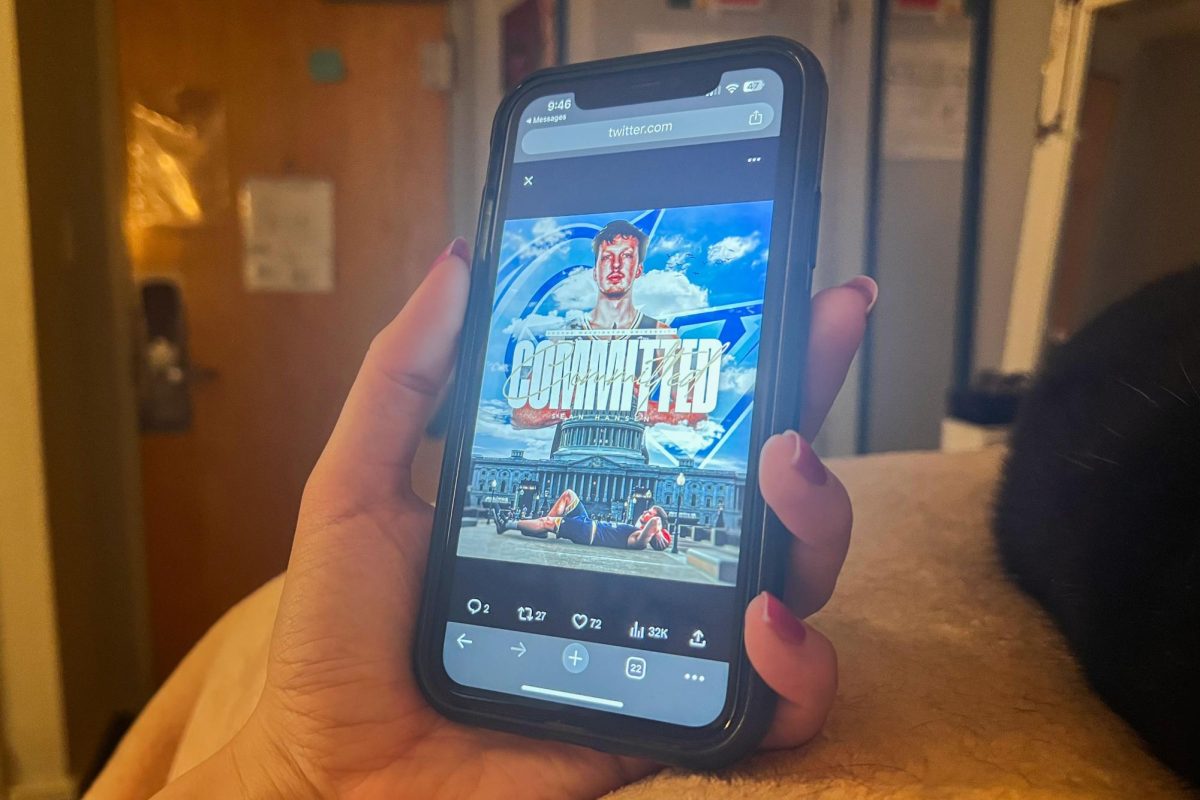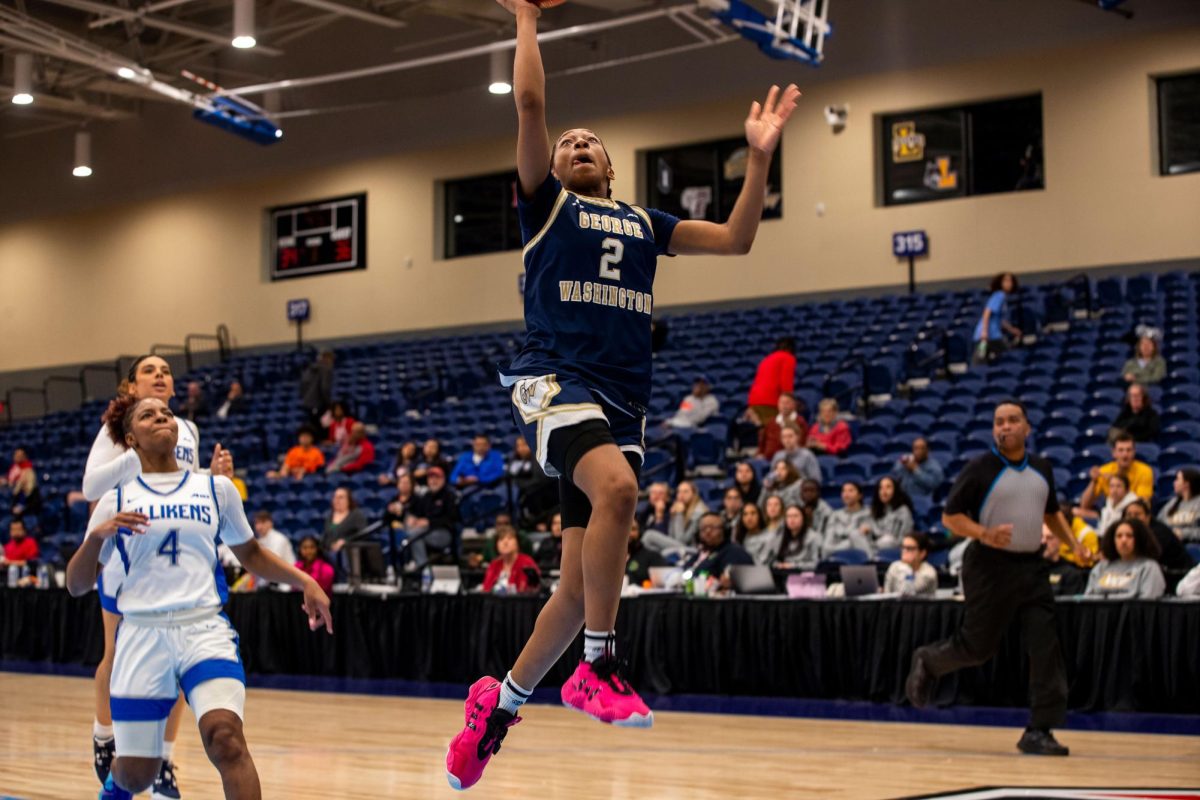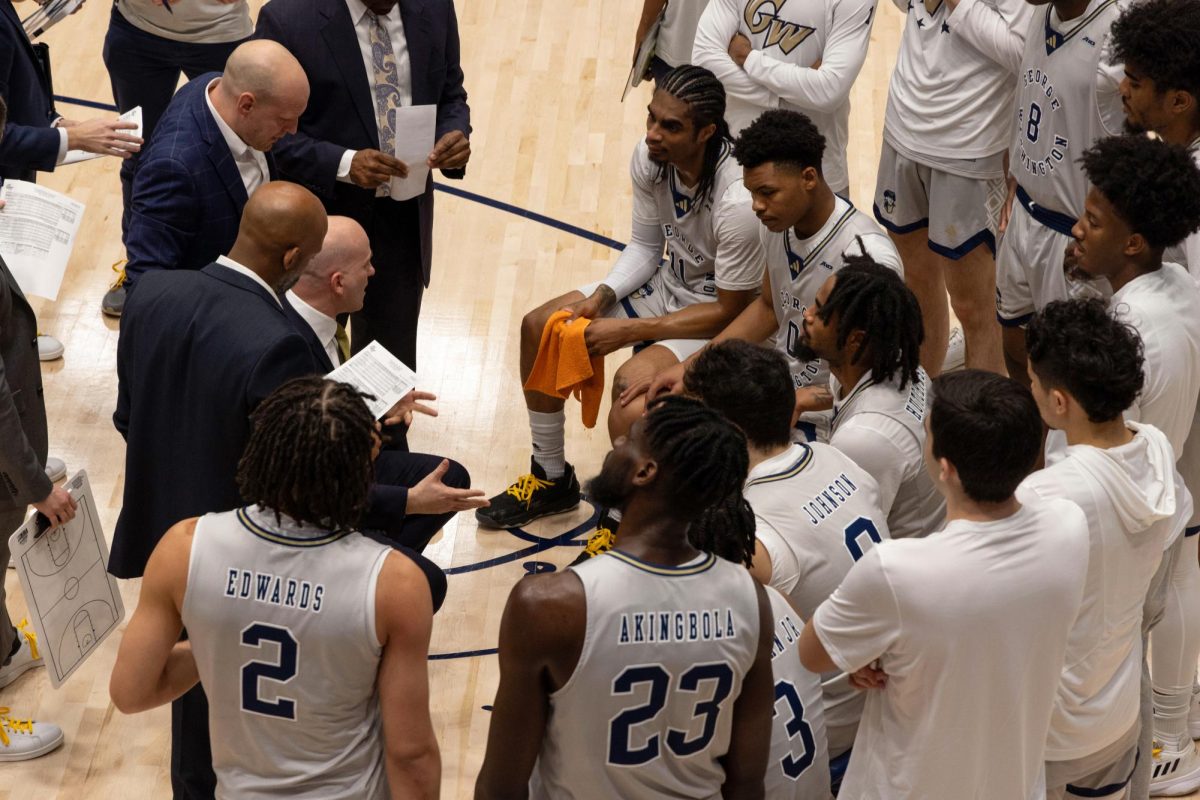For those not deeply schooled in the world of martial arts, a kendo sword might be more recognizable as a weapon used to deal out punishment on the backs and chests of professional wrestlers. But don’t expect to see any suplexes or choke slams at a GW kendo club practice: Real kendo is a sport of nuance and ability.
Kendo, which means “the way of the sword” in Japanese, is different from most martial arts. There is no hand-to-hand combat, nor is there any belt worn to demonstrate rank, although a rank system does exist. Unlike most other martial arts, participants wear armor called “bogu” to protect themselves, including a large helmet with a cage-like mask.
But despite its violent appearance, injuries are rare in kendo. Of the four types of strikes allowed in the sport, only three – those delivered to the wrists, head and torso – are practiced by GW’s team. The fourth, a thrust delivered to the neck protector, is not allowed in practice but is legal in competition.
GW’s team, now in its ninth year, is a relatively small but dedicated group. The team has between 10 and 15 members who regularly attend practices, which occur three times a week. The number of actual attendees at practice varies, as students who take GW’s Japanese swordsmanship class can make up a missed class by attending a club practice.
The team is coached by professor Brian Wright, who also teaches the Japanese swordsmanship class. In his absence, practices are led by team president Matt Segasture or co-president Erika Spencer-Iwai, or in their absence, by the more skilled members of the team.
This semester, club members have noticed an increased interest in the sport.
“Typically we get maybe less than five (new) people, and of that maybe two stay,” Segasture said. “This semester is a little different. We’ve actually gotten more beginners this semester than we’ve ever gotten before.”
Although team membership rises and falls as seniors graduate and new members join, the current team is younger and more inexperienced than in past years. The team often suffers from a lack of dedication on the part of new members. In a sport that features fundamentals that require hours of practice to learn, more than half of those that come out early in the semester will drop out.
“You get the people who want to come out because it has to do with Japan and those people typically are the ones who don’t stay,” Segasture said. “The ones that are like, ‘I like cartoons and I like anime’ and stuff like that. They typically don’t stay.”
But for students like freshman Sam Porter, who are willing to put in the time necessary to learn the sport, it can be a great way to enrich a true interest in Japanese culture.
“As someone who’s majoring in Asian studies and also someone who’s very interested in Japan and has lived there for awhile, it made sense to join the kendo team,” Porter said. “It’s a way of connecting more to my interest in Japan.”
As for competitions, the team competes against other schools in tournaments up and down the East Coast. The team competed at West Point last weekend, where they failed to get past the first round in team competition, though two team members advanced individually, one to the round of 16 and another to the round of eight. Historically, the team has had some success, once ranking as high as second at the tournament hosted by perennial power Cornell.
Most who stick with the team say that the benefits of kendo go beyond being able to win a sword fight.
“I’ve got a bunch of friends and I’ve lost a lot of weight and I’ve got a whole new sense of self,” said junior Rebecca Rowe. “I’ve become, I think, a lot more of a social person now because of it.”







